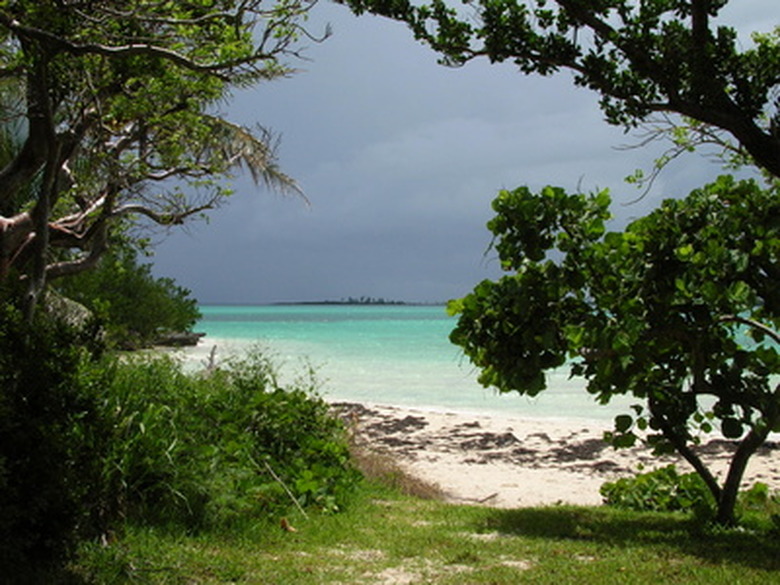Plants And Flowers Of The Bahamas
With more than 700 islands and 2,500 islets and cays, the Bahamas, which spread out over an area of approximately 100,000 square miles, have a number of ecosystems boasting many kinds of plant life. Different areas support plants from cacti to orchids. Depending on the area, plants must tolerate, among other conditions, salty spray, dry conditions, wet conditions and the shady areas of forest understories.
Century Plant
The century plant is so named because it blooms so rarely. It grows in pine forests, with flower heads producing yellow flowers that attract a wide variety of nectar-loving birds like hummingbirds and thrushes. These visit the plant during the winter. The plant is also called agave.
- With more than 700 islands and 2,500 islets and cays, the Bahamas, which spread out over an area of approximately 100,000 square miles, have a number of ecosystems boasting many kinds of plant life.
- It grows in pine forests, with flower heads producing yellow flowers that attract a wide variety of nectar-loving birds like hummingbirds and thrushes.
Night-Blooming Cereus
The night-blooming cereus (Hylocereus undatus) is also called the "Queen of the Night" because of its attractive characteristics. The plant is a climbing cactus native to the West Indies, including the Bahamas. It isn't particularly noteworthy until it receives rain. When it does, the cactus blooms in the night with white, vanilla-scented flowers, these a half-foot across. The aroma attracts sphinx moths.
Ironwood
Lignum vitae (Guaiacum sanctum) is also called ironwood, and its wood is so dense it doesn't float. This is a useful quality for construction, which made the tree endangered. As far as its ornamental value, Lignum vitae blooms with purple-blue flowers. Traditionally, the tree was also used as a medicinal plant. Ironwood is the Bahamas' national tree.
- The night-blooming cereus (Hylocereus undatus) is also called the "Queen of the Night" because of its attractive characteristics.
Yellow Elder
The yellow elder (Tecoma stans) is the Bahamas' national flower, even though it isn't native to the island. Introduced for landscaping, the plant produces yellow flowers on a large shrub.
Pigeon Plum
The pigeon plum plant (Coccoloba diversifolia) is a handy plant for areas that would challenge pickier specimens. Poor soil, salt spray, drought conditions, sun or shade–the pigeon plum can take it. The roots and purple fruits were previously used for medicinal purposes.
Satin Leaf
The satin leaf, or, satinleaf, tree (Chrysophyllum oliviforme) is prized for its leaves, as the name suggests. These have two different sides. One side is satiny green, but the other side is downy with red-brown hairs. The two sides make the tree seem to shimmer when the wind blows through the leaves.
- The yellow elder (Tecoma stans) is the Bahamas' national flower, even though it isn't native to the island.
- The pigeon plum plant (Coccoloba diversifolia) is a handy plant for areas that would challenge pickier specimens.
Orchids
Many species of orchids grow in the islands of the Bahamas. Vanilla is a native, flowering, climbing plant that grows in Blackland Coppice forest. This forest is a humid habitat sheltered by hardwood trees. Purple orchids grow in the pine forest.
